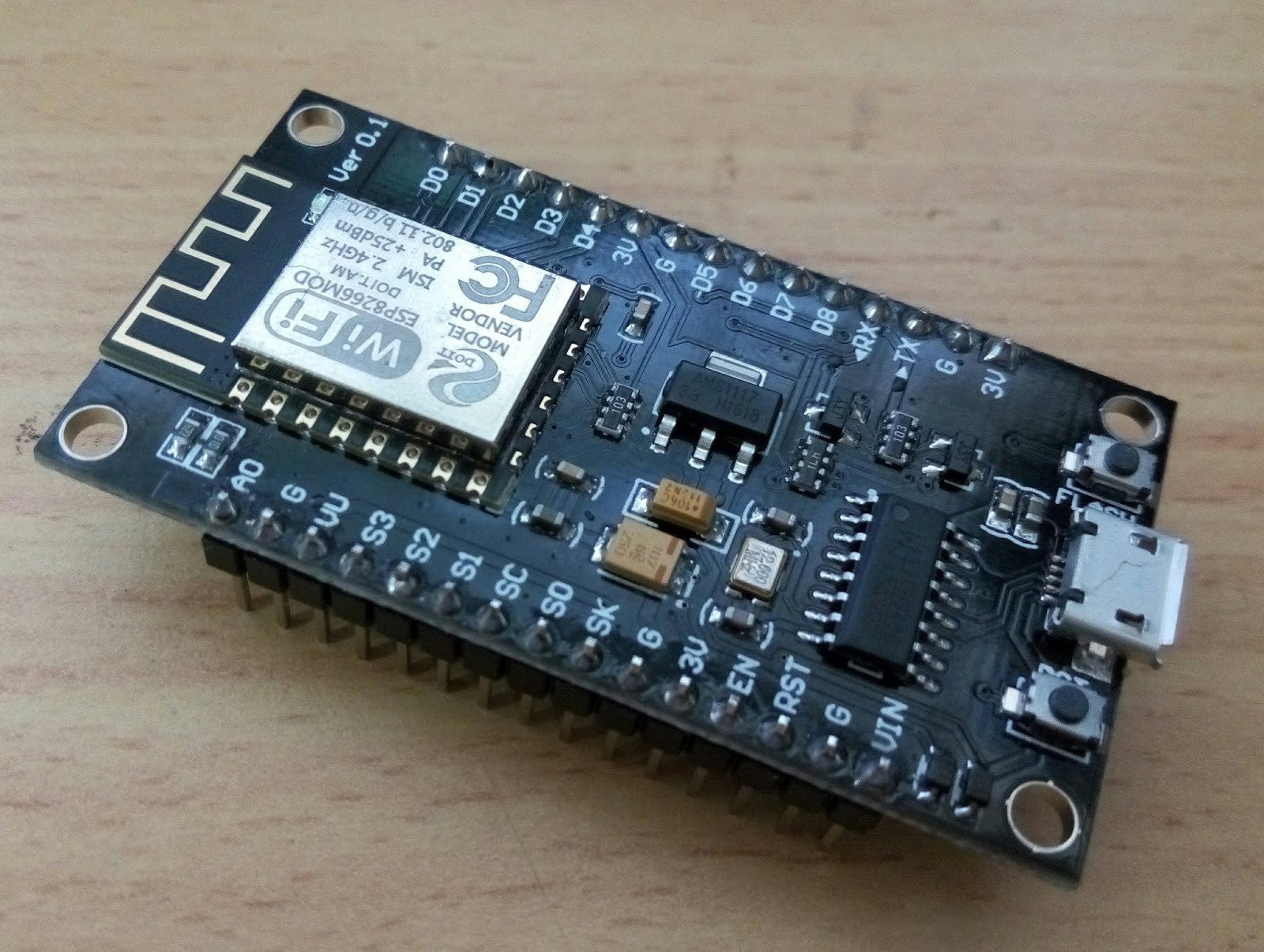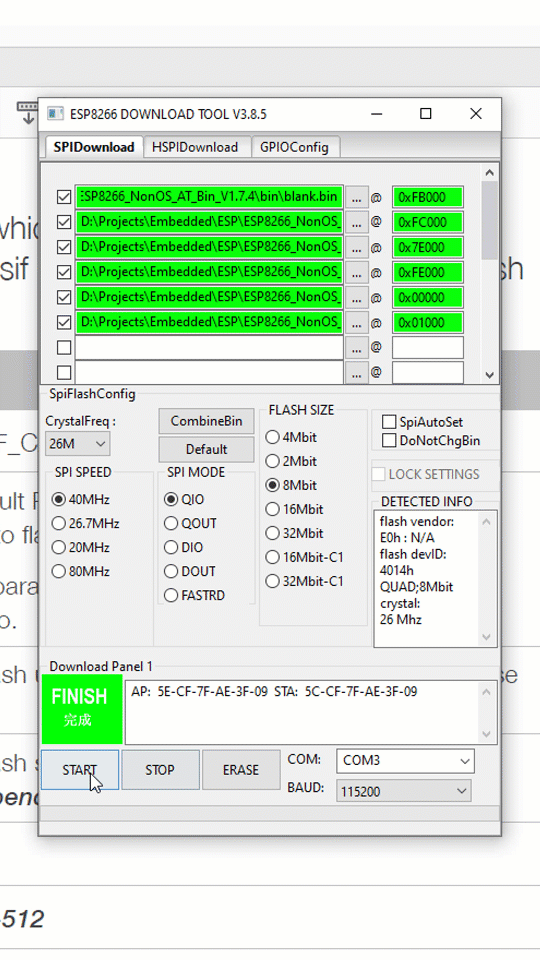
- #Esp now esp8266 firmware how to#
- #Esp now esp8266 firmware serial#
- #Esp now esp8266 firmware update#
- #Esp now esp8266 firmware software#
Here is how the final breadboard setup looks like. Just follow the connections on the diagram - I set colors to match its purpose. That connection is represented by white wires, and pins on the breadboard match ESP module pinout.

Notice that I couldn’t position the ESP module on the breadboard, but had to simulate adapter to be able to connect all other elements. Next, you have to connect all parts to the breadboard and assemble it using the diagram below. I made this simple adapter in about 15 minutes. You can make a nice little adapter for it, or connect it using male to female wires. Unfortunately, ESP-01 is not breadboard-friendly, which means it cannot be plugged in directly to the breadboard (the space between two rows of pins is too narrow and cannot fit in the middle). The first step is to assemble the circuit correctly. Next 3 pins must have specific values when booting in normal or in flash mode: PINįor more details on pull-up and pull-down resistors check this excellent tutorial. Pins that are not used can be left in floating state (unconnected). Based on the outcome, MCU will (or won’t) run in a certain mode. When ESP8266 is powering up, some pins are checked for their state.

#Esp now esp8266 firmware how to#
More information on how to use the breadboard can be found here. You just plug components on it and use special connection wires to connect them. The breadboard is used for fast circuit prototyping without soldering of electronic components. Also, we can use the adapter to power up the ESP8266 with 3.3V - there is a jumper on the adapter that has to be set for 3.3V output.
#Esp now esp8266 firmware serial#
It is used for communication between your computer and ESP8266 using serial connection. This adapter provides connectivity from USB to serial UART interface, and it has a voltage regulator for 3.3V or 5V output. Must be high for normal operation (Chip enable) Must be high on boot, low for flash update. UART Receive (warning, this pin is NOT 5V tolerant) Arduino), you need to add a voltage divider. Also, RX pin (UART Receive) does not tolerate more than 3.3V, so if you need to set up a communication with other devices (e.g. Applying voltage higher than 3,6V results in unrecoverable damage.

It’s important to remember that ESP8266 runs on 3.3V unlike Arduino and most of its sensors, so you have to be extremely careful when attaching it to a power supply.
#Esp now esp8266 firmware update#
The latter supports OTA (Over The Air) firmware update using WiFi connection rather than serial. The older one has 512Kb (blue board), but it’s deprecated and replaced with 1Mb version (black board).

ESP8266 supports up to 16MB of flash storage, and this module comes in 2 variants based on storage capacity. There is a way to expand the number of available GPIO ports using IO expander device like MCP23017, or by using I2C protocol for communicating with multiple devices based on addressing, but this is out of scope for this post. It exposes only 8 pins in a 2x4 layout - of which only 2 are GPIO pins, so there are practical limits of how much sensors or actuators can be attached to it. 1x FTDI FT232RL USB to TTL Serial Adapter - 3.3V and 5VĮSP-01 is the smallest of all ESP modules.I chose it because it’s small, cheap and interesting to work with, and I chose ESPEasy firmware because we’ll be using it in my next blog post, and it’s easy to check if the flashing went well.
#Esp now esp8266 firmware software#
Now I will walk you through the process of flashing new software on ESP-01. In my previous post, I have explained fundamentals about the device and what kind of software it can run. To make something useful of your brand new ESP8266 module, you have to flash new firmware to it.


 0 kommentar(er)
0 kommentar(er)
